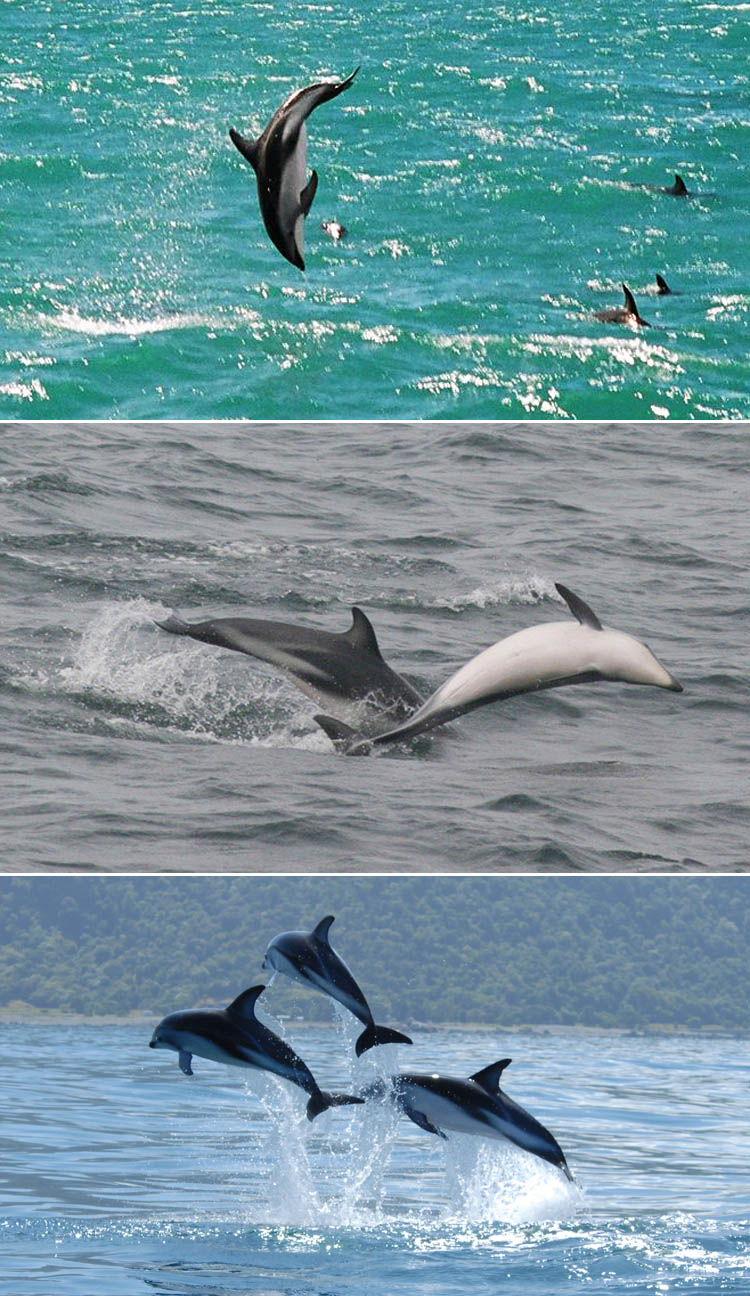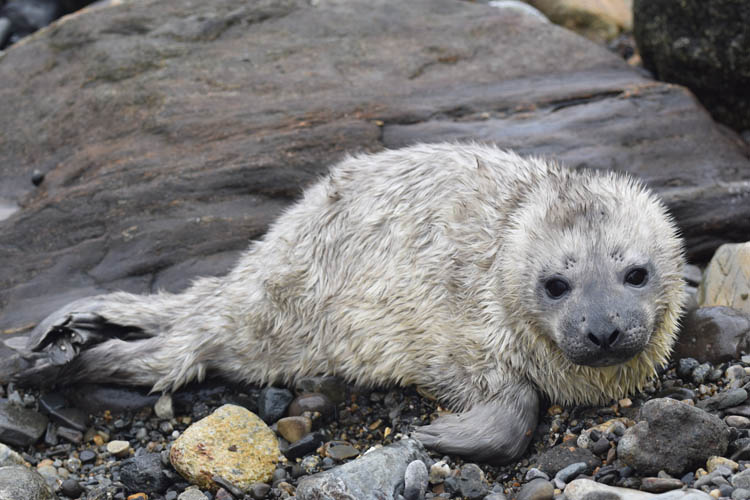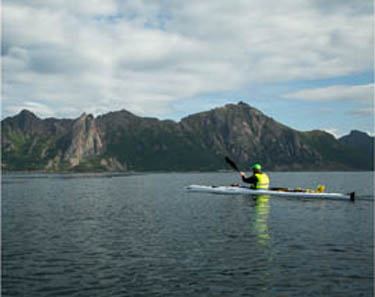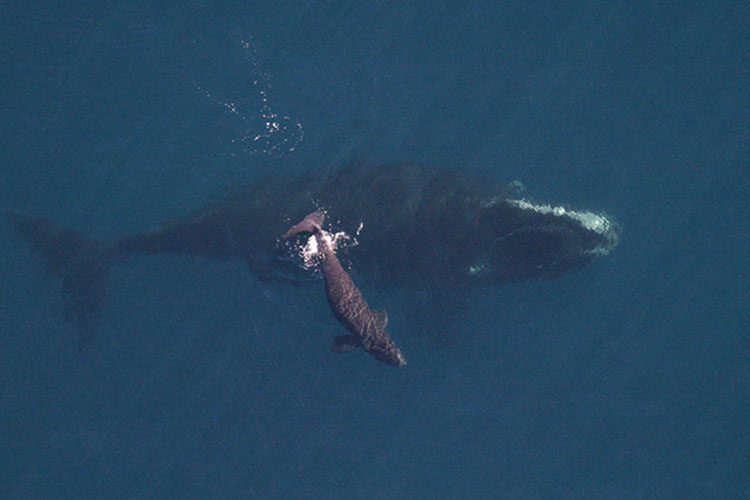|
|
The dusky dolphin (Lagenorhynchus obscurus) is a dolphin found in coastal waters in the Southern Hemisphere. Its specific epithet is Latin for "dark" or "dim". It is very closely genetically related to the Pacific white-sided dolphin, but current scientific consensus holds they are distinct species. The dolphin's range is patchy, with major populations around South America, southwestern Africa, New Zealand, and various oceanic islands, with some sightings around southern Australia and Tasmania. The dusky dolphin prefers cool currents and inshore waters, but can also be found offshore. It feeds on a variety of fish and squid species and has flexible hunting tactics. The dusky dolphin is known for its remarkable acrobatics, having a number of aerial behaviours.
The dolphins normally live in large groups that split into smaller subgroups. These subgroups are composed of mating adults (mating groups), mothers with calves (nursery groups) and nonbreeding adults. Dusky dolphins have a promiscuous mating system in which both males and females mate with multiple partners. Mating groups are generally made of around ten males and a single female.
In the mating groups, the males pursue a female in high-speed chases. Females seem to prefer males with great speed and agility rather than size, strength, or aggression. Females may extend the chase as long as possible so only the best male remains.
During copulation, females tend to be on the top. Dusky dolphins sometimes engage in sexual behaviour for reasons other than reproduction, perhaps for greeting, communication, or strengthening social bonds. Homosexual behaviour between males has been observed. Dolphins having sex for social reasons tend to be more relaxed.
Dusky dolphins perform a number of aerial displays, including leaps, backslaps, headslaps, tailslaps, spins, and noseouts. They also perform head-over-tail leaps which have been called the most "acrobatic" of the displays. A headfirst re-entry is performed when a dolphin leaps entirely out of the water and positions its back in a curve while it flips the tail to land back in the water head-first. "Humping" is similar, except the snout and tail remain in the water when the dolphin is the arch. Leaps, head-over-tail leaps, backslaps, headslaps, tailslaps, and spins are often done over and over again. Young dusky dolphins apparently are not born with the ability to perform the leaps and must learn to master each one. Calves appear to learn the leaps in this order: noisy leaps, head first re-entries, coordinated leaps, and acrobatic leaps. Adults may perform different leaps in different contexts, and calves may independently learn how to perform leaps, as well as learn when to perform these when interacting others.
|
|

Dusky dolphions (Lagenorhynchus obscurus) at play. Photo attributions, top to bottom:
Sami Keinänen - Flickr, CC BY-SA 2.0, https://commons.wikimedia.org/w/index.php?curid=3507209
Public Domain, https://commons.wikimedia.org/w/index.php?curid=527383
Dr. Mridula Srinivasan, NOAA/NMFS/OST/AMD. - NOAA Photo Library: anim1772, Public Domain, https://commons.wikimedia.org/w/index.php?curid=17985160
|
|

































